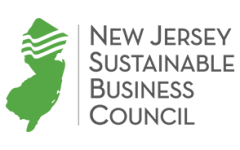In late August of last year, Hurricane Ida’s remnants slammed into New Jersey, causing widespread flooding and killing 30 people. More than 10 inches of rain fell in parts of the state in two days.
FEMA (Federal Emergency Management Agency) Administrator Deanne Criswell warned that storms like Ida were a result of the climate crisis.
“It’s critical that we continue to plan for what the future disasters might be instead of always focusing our attention on historical events,” Criswell said. “We can expect to see more events, which is why it’s so important right now that we start to think about what the future risks are going to be and that we invest in mitigation projects.”
Additionally, heavy rains, followed by periods of sunny and hot weather, create the conditions for algae outbreaks – especially when stormwater, soil erosion, and sewage spills carry phosphorus-laden water over parking lots or sidewalks where the water can’t be absorbed into the ground.
As strengthening and more frequent storms threaten local communities and main street businesses with more flooding and escalating insurance premiums, there is a proven way to build resilience and local self-reliance without outside interference or mandates.
Lake Hopatcong, and 39 other lakes in New Jersey, have experienced massive and lingering toxic, hazardous algal blooms (HAB) that have closed lakes, hurt small, local businesses, and put people’s health in danger. A property’s value near an infested lake can drop by up to $85,000, and waterside communities can lose millions of dollars in revenue from tourism, boating, fishing and other sectors.
Pay more to big insurance companies or invest in your own community?
As with any business, insurance companies need to make a profit. And to remain profitable they need to continually update their risk profiles based on objective data rather than on partisan politics. As a result, residents and businesses who have already experienced stormwater-related damage, and those who are at risk are likely to see their insurance premiums climb.
There are ways, however, communities can fight the rise in insurance premiums and costly flood damage by making investments in their own communities and local economies, including:
- Improving aging “gray” infrastructure: sewer drains, pipes and treatment systems that can leak and overflow with age.
- Investing in “green” stormwater infrastructure: sustainable and resilient designs such as rain gardens, constructed wetlands, floodplain reconnection, stream restoration, permeable pavement and green roofs. All of these employ natural processes to collect and filter out pollutants, while decreasing stormwater runoff and erosion.
Transitioning from gray infrastructure to green infrastructure is feasible, effective and yields a favorable return on investment for entire communities: $7 to $27 in benefits for every dollar invested.
A proven strategy for municipalities to fund stormwater infrastructure improvements is a stormwater utility. It allows a town, county, or regional sewage authority to assess a fee based on a property’s impervious surface area and contribution to polluted stormwater. These funds also are legally dedicated and cannot be diverted to a municipality’s general fund.
Across the U.S., there are nearly 1,800 stormwater utilities and they are so popular that they exist in 41 states.
It keeps money in the local economy and rewards being a good neighbor
Stormwater utilities are designed to be fair in how fees are levied, since those whose properties contribute the most to harmful stormwater runoff pay the most toward mitigating the harm they’re helping to create.
The design also creates a financial incentive for all property owners to redevelop their properties with more permeable surface materials, which also benefits the surrounding community.
This dynamic is a virtuous cycle of economic activity and development that creates the jobs required to build green infrastructure projects, which help protect residents’ property values, local economies, lakes, and streams.
Flood protection using a stormwater utility is not a liberal or conservative idea – it’s a commonsense idea. While San Francisco has one, so do Ogden, Utah, and Spartanburg, S.C.
Since New Jersey is a home rule state, our towns can and should independently take the initiative to protect their own residents and businesses from costly flood risk by taking advantage of a proven tool that they can design and implement themselves.
RICHARD LAWTON – The writer is the executive director of the NJ Sustainable Business Council and helps lead the “Clean Water is Good for Business” campaign. He can be reached at rlawton@njsbcouncil.org.
This Op Ed was originally published in The Bernardsville News

